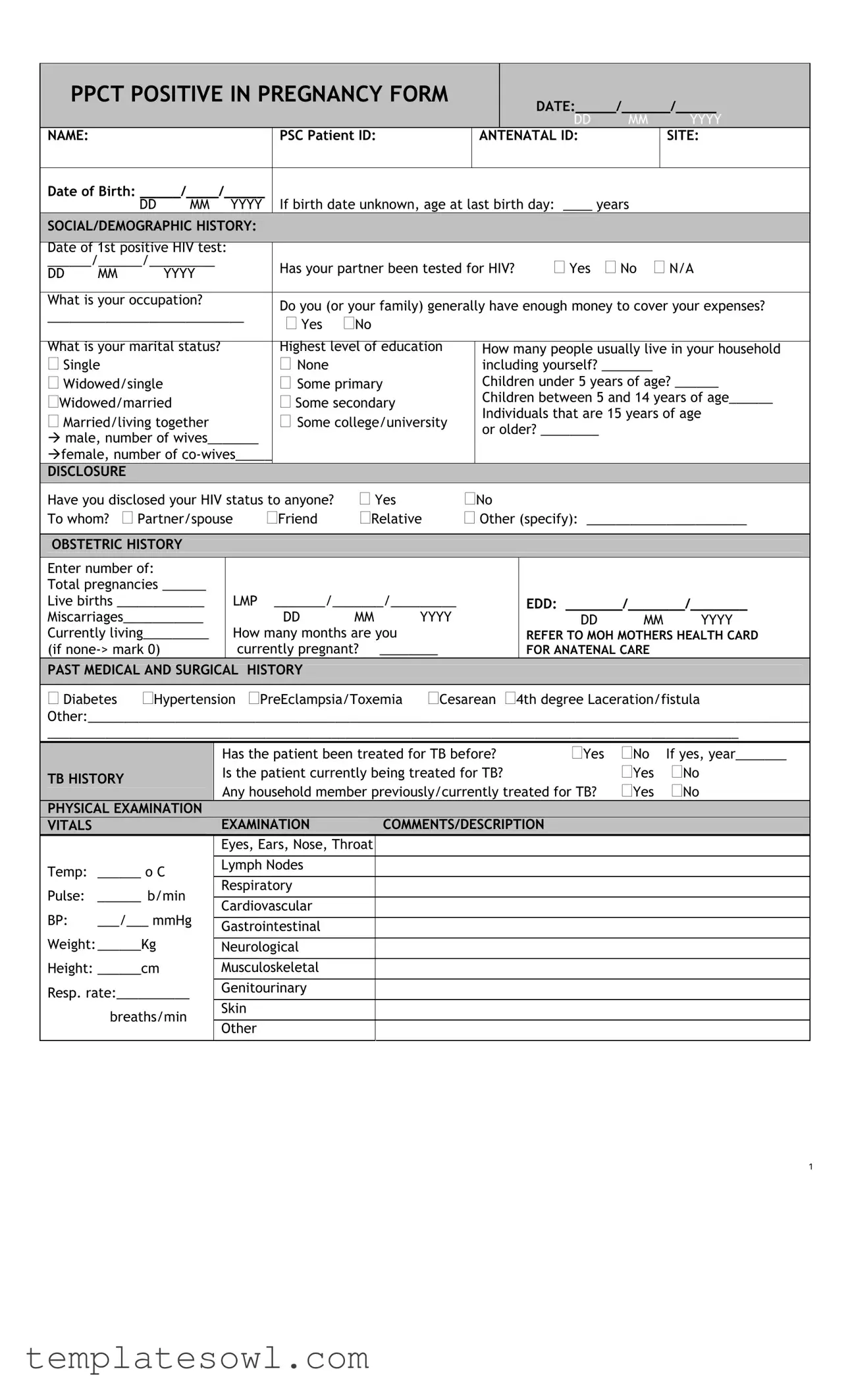When filling out the Pregnancy Sample Paper Work form, clarity and attention to detail are critical. One common mistake is failing to enter the date correctly. Many individuals either omit the date or enter it in the wrong format. Ensure that you input the date as DD/MM/YYYY to avoid delays in processing.
Another frequent error involves leaving vital sections blank. Areas such as "occupation" or "marital status" often go unfilled. Each section serves a distinct purpose and contributes to your medical history. Skipping these parts may lead to incomplete records, complicating your care.
Some people also struggle with inconsistencies in their answers. For example, stating one age for the date of birth but providing a different age at the last birthday can raise questions. It’s essential to ensure that all information aligns for accuracy and credibility.
Furthermore, negligence regarding the HIV disclosure section can lead to significant issues. Individuals might forget to indicate whether they disclosed their HIV status or not. This can hinder proper medical support and guidance, emphasizing the importance of clear responses in this area.
It is not uncommon for individuals to misuse or misunderstand terms in the "social/demographic history" section. Selecting yes or no for questions about financial sufficiency or partner testing can be confusing. Precise understanding and accurate response are necessary to convey your situation effectively.
In some cases, people fill out the obstetric history incorrectly. They may forget to include previous pregnancies, live births, or miscarriages, or they might get the dates wrong. This information is crucial for assessing health risks, so careful attention must be paid.
Another area of confusion stems from the physical examination section. Respondents often misinterpret medical terminology or forget to include vital signs, leading to an incomplete assessment. Review this section meticulously to ensure all vital signs are recorded correctly.
Lastly, failing to sign or date the form can cause delays in processing. Many individuals assume that they have completed the paperwork, forgetting that their signature is essential for validation. Always double-check that you've signed and dated the document before submission.


